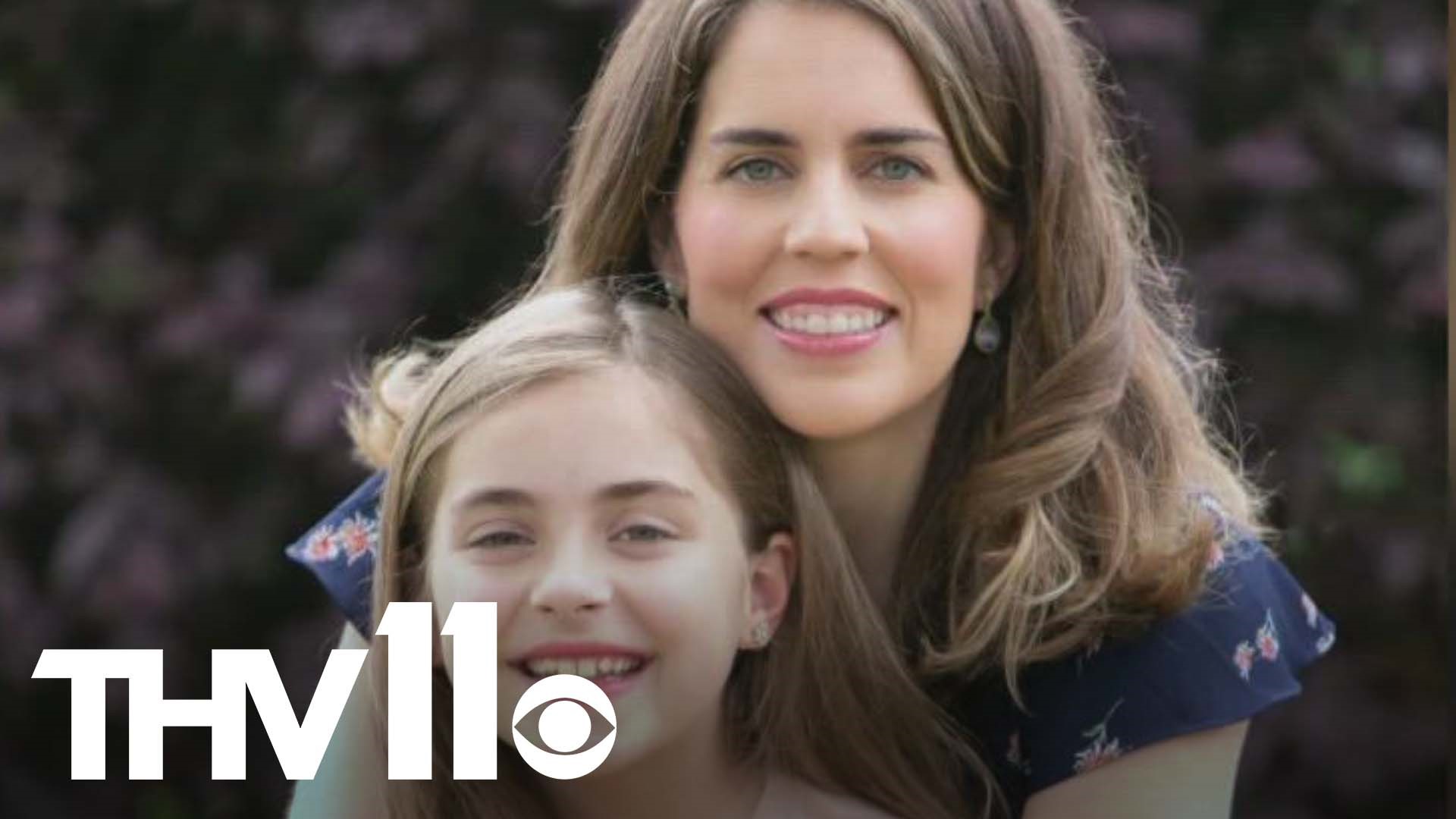LITTLE ROCK, Ark. — Breast cancer is something that impacts a large number of women each year and one of the most effective ways of battling it comes in the form of early detection, which could be as simple as checking in with a buddy and reminding them to keep up with their breast health.
In other case, it can be as simple as looking in the mirror and noticing a difference yourself -- that's exactly what happened for Victoria Doyle during a routine workout at the gym.
"In February of 2020, I was actually in the changing room at my gym, and at the point when my arms were overhead, I noticed a dimple in the mirror in front of me," Victoria said.
Upon first glance, Victoria said that she thought the dimple was just another sign of getting older, but once she got feedback from family and friends, that's when she knew to look into further.
"So, I kind of brushed it off at the time. But later that day, I texted friends and family and asked other females if they had seen anything like that and sort of immediately all of them said 'no', they had not," Victoria said.
This dimple came as she knew she already had a mammogram scheduled for the following month, where doctors found something concerning.
"Right after the mammogram, they said we see something a little concerning. We're going to send you across the hall for an ultrasound," she said.
Even in that moment as she was being sent across the hall, Victoria's mind was on getting out of the clinic in order to take her 9-year-old daughter Molly to the orthodontist - it was not on learning that she had breast cancer.
"That's what I think back on when I think about other women. I think about how it wasn't a convenient time and it never is," Victoria said.
According to the CDC, breast cancer is the most common cancer in women with 1-in-8 likely to be diagnosed in their lifetime.
It's a cause that Dr. Gwendolyn Bryant-Smith, Director of the Breast Center at Winthrop Rockefeller Cancer Institute at UAMS, is dedicated towards. She said both the time it takes and the technology available to women are a worthy investment.
"When I was a resident and fellow, we were still reading a lot of film screen mammography, which is a much older technology. Since I finished fellowship and have been in practice [for] over 16 years, we now have 3-D mammography, which allows us to look at all angles of the breast tissue," Bryant-Smith said.
She said the Rockefeller Center offers a one-stop shop of screenings where a woman can go from a mammogram to a diagnosis in the exact same day.
Victoria received care from the UAMS center. That dimple that she saw at the gym turned out to be invasive ductal carcinoma - a stage three cancer that had spread to her lymphatic system.
She underwent chemotherapy and radiation during the height of pandemic, which meant that no visitors were allowed. But despite, Molly saw to it that her mom wasn't really alone.
Along with her daughter, Victoria also credits the staff for helping her through it.
"There was one employee early on in my treatment who gave me a rock [and] on it, was the word 'hope'. She said 'when you're finished, you can give it back to us. I remember looking down at the rock and the word 'hope' was a little smudged, and it made me realize at that moment how special it was of her to think of me, and that someone carried it before I did and returned it. So, they were still alive..," Victoria said.
On her final day of chemotherapy, Victoria rang a traditional end-of-treatment bell and closed the book on this chapter of her cancer journey.
Once a year is the suggested time for women over 40, but Victoria was only 35 - so self-breast exams are another reminder that it's never too early to encourage your buddy to check.

